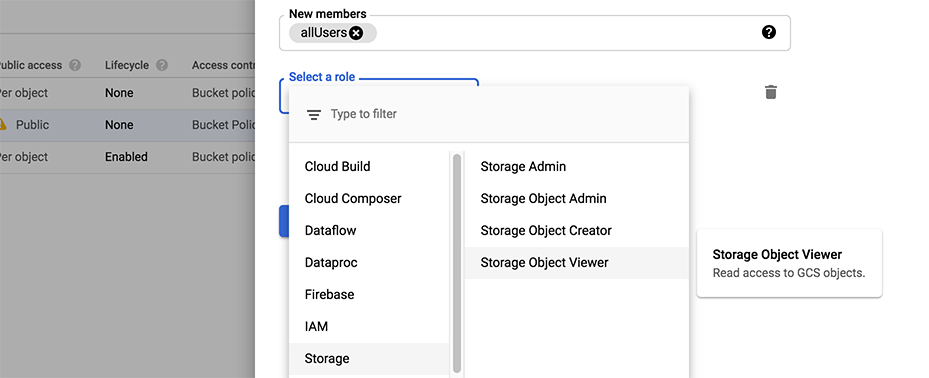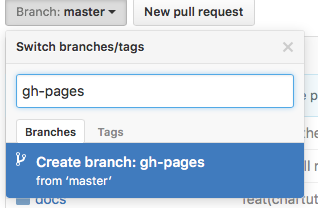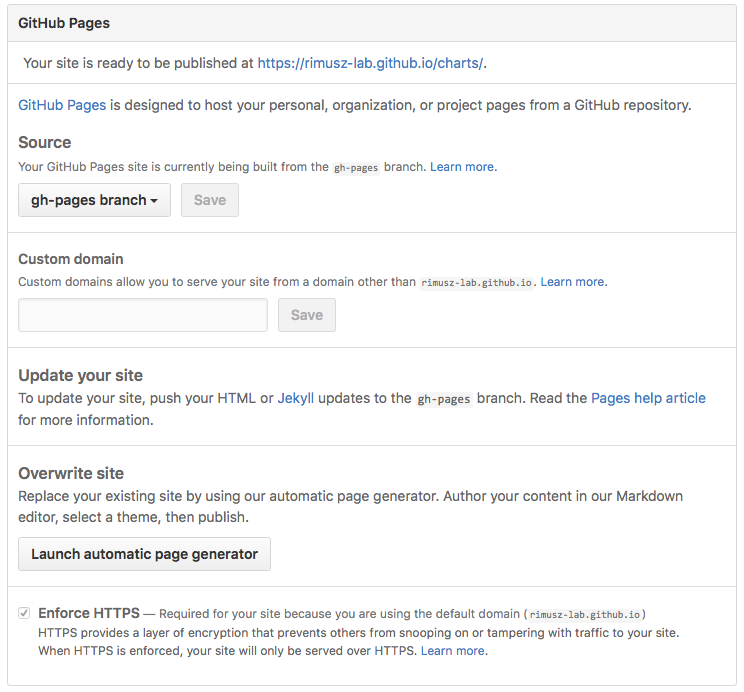github.com/latiif/helm@v2.15.0+incompatible/docs/chart_repository.md (about) 1 # The Chart Repository Guide 2 3 This section explains how to create and work with Helm chart repositories. At a 4 high level, a chart repository is a location where packaged charts can be 5 stored and shared. 6 7 The official chart repository is maintained by the 8 [Helm Charts](https://github.com/helm/charts), and we welcome 9 participation. But Helm also makes it easy to create and run your own chart 10 repository. This guide explains how to do so. 11 12 ## Prerequisites 13 14 * Go through the [Quickstart](quickstart.md) Guide 15 * Read through the [Charts](charts.md) document 16 17 ## Create a chart repository 18 19 A _chart repository_ is an HTTP server that houses an `index.yaml` file and 20 optionally some packaged charts. When you're ready to share your charts, the 21 preferred way to do so is by uploading them to a chart repository. 22 23 **Note:** For Helm 2.0.0, chart repositories do not have any intrinsic 24 authentication. There is an [issue tracking progress](https://github.com/helm/helm/issues/1038) 25 in GitHub. 26 27 Because a chart repository can be any HTTP server that can serve YAML and tar 28 files and can answer GET requests, you have a plethora of options when it comes 29 down to hosting your own chart repository. For example, you can use a Google 30 Cloud Storage (GCS) bucket, Amazon S3 bucket, Github Pages, or even create your 31 own web server. 32 33 ### The chart repository structure 34 35 A chart repository consists of packaged charts and a special file called 36 `index.yaml` which contains an index of all of the charts in the repository. 37 Frequently, the charts that `index.yaml` describes are also hosted on the same 38 server, as are the [provenance files](provenance.md). 39 40 For example, the layout of the repository `https://example.com/charts` might 41 look like this: 42 43 ``` 44 charts/ 45 | 46 |- index.yaml 47 | 48 |- alpine-0.1.2.tgz 49 | 50 |- alpine-0.1.2.tgz.prov 51 ``` 52 53 In this case, the index file would contain information about one chart, the Alpine 54 chart, and provide the download URL `https://example.com/charts/alpine-0.1.2.tgz` 55 for that chart. 56 57 It is not required that a chart package be located on the same server as the 58 `index.yaml` file. However, doing so is often the easiest. 59 60 ### The index file 61 62 The index file is a yaml file called `index.yaml`. It 63 contains some metadata about the package, including the contents of a 64 chart's `Chart.yaml` file. A valid chart repository must have an index file. The 65 index file contains information about each chart in the chart repository. The 66 `helm repo index` command will generate an index file based on a given local 67 directory that contains packaged charts. 68 69 This is an example of an index file: 70 71 ``` 72 apiVersion: v1 73 entries: 74 alpine: 75 - created: 2016-10-06T16:23:20.499814565-06:00 76 description: Deploy a basic Alpine Linux pod 77 digest: 99c76e403d752c84ead610644d4b1c2f2b453a74b921f422b9dcb8a7c8b559cd 78 home: https://k8s.io/helm 79 name: alpine 80 sources: 81 - https://github.com/helm/helm 82 urls: 83 - https://technosophos.github.io/tscharts/alpine-0.2.0.tgz 84 version: 0.2.0 85 - created: 2016-10-06T16:23:20.499543808-06:00 86 description: Deploy a basic Alpine Linux pod 87 digest: 515c58e5f79d8b2913a10cb400ebb6fa9c77fe813287afbacf1a0b897cd78727 88 home: https://k8s.io/helm 89 name: alpine 90 sources: 91 - https://github.com/helm/helm 92 urls: 93 - https://technosophos.github.io/tscharts/alpine-0.1.0.tgz 94 version: 0.1.0 95 nginx: 96 - created: 2016-10-06T16:23:20.499543808-06:00 97 description: Create a basic nginx HTTP server 98 digest: aaff4545f79d8b2913a10cb400ebb6fa9c77fe813287afbacf1a0b897cdffffff 99 home: https://k8s.io/helm 100 name: nginx 101 sources: 102 - https://github.com/helm/charts 103 urls: 104 - https://technosophos.github.io/tscharts/nginx-1.1.0.tgz 105 version: 1.1.0 106 generated: 2016-10-06T16:23:20.499029981-06:00 107 ``` 108 109 A generated index and packages can be served from a basic webserver. You can test 110 things out locally with the `helm serve` command, which starts a local server. 111 112 ```console 113 $ helm serve --repo-path ./charts 114 Regenerating index. This may take a moment. 115 Now serving you on 127.0.0.1:8879 116 ``` 117 118 The above starts a local webserver, serving the charts it finds in `./charts`. The 119 serve command will automatically generate an `index.yaml` file for you during 120 startup. 121 122 ## Hosting Chart Repositories 123 124 This part shows several ways to serve a chart repository. 125 126 ### ChartMuseum 127 128 The Helm project provides an open-source Helm repository server called [ChartMuseum](https://chartmuseum.com) that you can host yourself. 129 130 ChartMuseum supports multiple cloud storage backends. Configure it to point to the directory or bucket containing your chart packages, and the index.yaml file will be generated dynamically. 131 132 It can be deployed easily as a [Helm chart](https://github.com/helm/charts/tree/master/stable/chartmuseum): 133 ``` 134 helm install stable/chartmuseum 135 ``` 136 137 and also as a [Docker image](https://hub.docker.com/r/chartmuseum/chartmuseum/tags): 138 ``` 139 docker run --rm -it \ 140 -p 8080:8080 \ 141 -v $(pwd)/charts:/charts \ 142 -e DEBUG=true \ 143 -e STORAGE=local \ 144 -e STORAGE_LOCAL_ROOTDIR=/charts \ 145 chartmuseum/chartmuseum 146 ``` 147 148 You can then add the repo to your local repository list: 149 ``` 150 helm repo add chartmuseum http://localhost:8080 151 ``` 152 153 ChartMuseum provides other features, such as an API for chart uploads. Please see the [README](https://github.com/helm/chartmuseum) for more info. 154 155 ### Google Cloud Storage 156 157 The first step is to **create your GCS bucket**. We'll call ours 158 `fantastic-charts`. 159 160  161 162 Next, make your bucket public by **editing the bucket permissions**. 163 164  165 166 Insert this line item to **make your bucket public**: 167 168  169 170 Congratulations, now you have an empty GCS bucket ready to serve charts! 171 172 You may upload your chart repository using the Google Cloud Storage command line 173 tool, or using the GCS web UI. This is the technique the official Kubernetes 174 Charts repository hosts its charts, so you may want to take a 175 [peek at that project](https://github.com/helm/charts) if you get stuck. 176 177 **Note:** A public GCS bucket can be accessed via simple HTTPS at this address 178 `https://bucket-name.storage.googleapis.com/`. 179 180 ### JFrog Artifactory 181 182 You can also set up chart repositories using JFrog Artifactory. 183 Read more about chart repositories with JFrog Artifactory [here](https://www.jfrog.com/confluence/display/RTF/Helm+Chart+Repositories) 184 185 ### ProGet 186 187 Helm chart repositories are supported by ProGet. For more information, visit the [Helm repository documentation](https://inedo.com/support/documentation/proget/feeds/helm) on the Inedo website. 188 189 ### Github Pages example 190 191 In a similar way you can create charts repository using GitHub Pages. 192 193 GitHub allows you to serve static web pages in two different ways: 194 195 - By configuring a project to serve the contents of its `docs/` directory 196 - By configuring a project to serve a particular branch 197 198 We'll take the second approach, though the first is just as easy. 199 200 The first step will be to **create your gh-pages branch**. You can do that 201 locally as. 202 203 ```console 204 $ git checkout -b gh-pages 205 ``` 206 207 Or via web browser using **Branch** button on your Github repository: 208 209  210 211 Next, you'll want to make sure your **gh-pages branch** is set as Github Pages, 212 click on your repo **Settings** and scroll down to **Github pages** section and 213 set as per below: 214 215  216 217 By default **Source** usually gets set to **gh-pages branch**. If this is not set by default, then select it. 218 219 You can use a **custom domain** there if you wish so. 220 221 And check that **Enforce HTTPS** is ticked, so the **HTTPS** will be used when 222 charts are served. 223 224 In such setup you can use **master branch** to store your charts code, and 225 **gh-pages branch** as charts repository, e.g.: 226 `https://USERNAME.github.io/REPONAME`. The demonstration [TS Charts](https://github.com/technosophos/tscharts) 227 repository is accessible at `https://technosophos.github.io/tscharts/`. 228 229 ### Ordinary web servers 230 231 To configure an ordinary web server to serve Helm charts, you merely need to do 232 the following: 233 234 - Put your index and charts in a directory that the server can serve 235 - Make sure the `index.yaml` file can be accessed with no authentication requirement 236 - Make sure `yaml` files are served with the correct content type (`text/yaml` or 237 `text/x-yaml`) 238 239 For example, if you want to serve your charts out of `$WEBROOT/charts`, make sure 240 there is a `charts/` directory in your web root, and put the index file and 241 charts inside of that folder. 242 243 244 ## Managing Chart Repositories 245 246 Now that you have a chart repository, the last part of this guide explains how 247 to maintain charts in that repository. 248 249 250 ### Store charts in your chart repository 251 252 Now that you have a chart repository, let's upload a chart and an index file to 253 the repository. Charts in a chart repository must be packaged 254 (`helm package chart-name/`) and versioned correctly (following 255 [SemVer 2](https://semver.org/) guidelines). 256 257 These next steps compose an example workflow, but you are welcome to use 258 whatever workflow you fancy for storing and updating charts in your chart 259 repository. 260 261 Once you have a packaged chart ready, create a new directory, and move your 262 packaged chart to that directory. 263 264 ```console 265 $ helm package docs/examples/alpine/ 266 $ mkdir fantastic-charts 267 $ mv alpine-0.1.0.tgz fantastic-charts/ 268 $ helm repo index fantastic-charts --url https://fantastic-charts.storage.googleapis.com 269 ``` 270 271 The last command takes the path of the local directory that you just created and 272 the URL of your remote chart repository and composes an `index.yaml` file inside the 273 given directory path. 274 275 Now you can upload the chart and the index file to your chart repository using 276 a sync tool or manually. If you're using Google Cloud Storage, check out this 277 [example workflow](chart_repository_sync_example.md) using the gsutil client. For 278 GitHub, you can simply put the charts in the appropriate destination branch. 279 280 ### Add new charts to an existing repository 281 282 Each time you want to add a new chart to your repository, you must regenerate 283 the index. The `helm repo index` command will completely rebuild the `index.yaml` 284 file from scratch, including only the charts that it finds locally. 285 286 However, you can use the `--merge` flag to incrementally add new charts to an 287 existing `index.yaml` file (a great option when working with a remote repository 288 like GCS). Run `helm repo index --help` to learn more, 289 290 Make sure that you upload both the revised `index.yaml` file and the chart. And 291 if you generated a provenance file, upload that too. 292 293 ### Share your charts with others 294 295 When you're ready to share your charts, simply let someone know what the URL of 296 your repository is. 297 298 From there, they will add the repository to their helm client via the `helm 299 repo add [NAME] [URL]` command with any name they would like to use to 300 reference the repository. 301 302 ```console 303 $ helm repo add fantastic-charts https://fantastic-charts.storage.googleapis.com 304 $ helm repo list 305 fantastic-charts https://fantastic-charts.storage.googleapis.com 306 ``` 307 308 If the charts are backed by HTTP basic authentication, you can also supply the 309 username and password here: 310 311 ```console 312 $ helm repo add fantastic-charts https://fantastic-charts.storage.googleapis.com --username my-username --password my-password 313 $ helm repo list 314 fantastic-charts https://fantastic-charts.storage.googleapis.com 315 ``` 316 317 **Note:** A repository will not be added if it does not contain a valid 318 `index.yaml`. 319 320 After that, your users will be able to search through your charts. After you've updated 321 the repository, they can use the `helm repo update` command to get the latest 322 chart information. 323 324 *Under the hood, the `helm repo add` and `helm repo update` commands are 325 fetching the index.yaml file and storing them in the 326 `$HELM_HOME/repository/cache/` directory. This is where the `helm search` 327 function finds information about charts.*